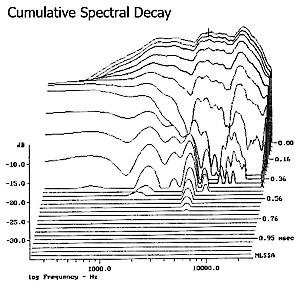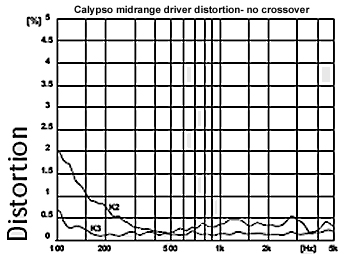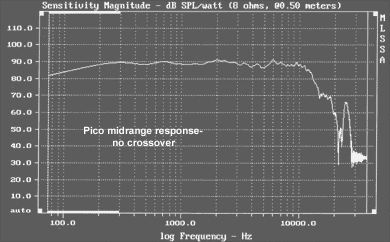 |
||||||||||||
 |
||||||||||||
Behind the scenes poop. Ah, the stuff any outsiders always imagine the well-positioned insiders are hip to. But it's true. Some of us nearly do become audiophile paparazzi. We become information portals. Stuff is given to us, we pass it on. Presumably in exactly that very spirit, I found myself today the recipient of a carbon copy reply which Roy Johnson of Green Mountain Audio penned in response to a prospective customer inquiry. The information is so relevant that it's herewith shared. Roy Johnson is arguably the foremost authority on 1st-order filters in loudspeakers. He has spent years learning the associated math to approach the subject not intuitively but scientifically. "Thank you for your interest in our speakers. I imagine you have already visited our website.I apologize for this delay in answering you, but I needed to make the time to give you a considered response. This is a lengthy subject and I am certain I will do a better job when I finish the technical library pages for the website. I shall endeavor to give you as much here as an e-mail format will allow. I appreciate this opportunity to share some measurements with you (which we are preparing for the website) and I explain them below. However, it is important to understand something that lies at the central position of making measurements on speakers. There is no measurement, nor any collection of measurements that will tell anyone how a speaker will sound. Certain measurements will tell you if a speaker is worth an audition. That does help, of course. John Atkinson of Stereophile has been measuring speakers for many years, and so have many others - but with only partial success. This is not to imply that measuring speakers is a hopeless endeavor. What I have found -- and I am sure many others have also -- is that very many measurements are required because each one characterizes only one or two aspects of a speaker's performance. Those are the measurements I cannot release or others will then know my engineering. But let us suppose I could release everything. If so, let us take the simplest example. If you ask for the frequency response, do you want the anechoic response? This is the frequency response of the speaker in a place without any surfaces near it, such as outdoors, placed on a pole at least 10 meters above the ground. Therefore, such a measurement will not show how a room will boost that speaker's bass response. Anything below 400Hz in this measurement is not representative of what we hear in a room. We also cannot accurately 'splice' onto this measurement what its woofer measured up close because that again leaves out the room's effect on the bass. Do you want the frequency response to be taken in a room? For that, should we use pink noise, a sine wave sweep, the MLS noise or tone bursts? Each measures something different.
If we look at an impulse response, it has a very high peak-to-average ratio so by the time you get the average level 'loud enough' to simulate real music, then you are running a thousand watts to the tweeter for a very brief moment. This is for a very short impulse, less than a millisecond long, which means that nothing below 1kHz is stimulated. |
||||||||||||
 |
||||||||||||
 |
||||||||||||
| The Callisto tweeter's decay graph does not show the effects of damping we add to its chassis. Its response curve does not show the effect of the wool felt placed around it. These are both MLS measurements. As with most MLS measurements, they have only 20Hz-wide windows (frequency 'bins'). Thus, very narrow-band resonances would not be shown. |
||||||||||||
 |
||||||||||||
| The Calypso's midrange distortion graph show its 2nd and 3rd harmonic distortions to be extremely low. That graph however, does not tell you how it performs on complex tones. Its frequency response graph is remarkably smooth but does not really show you if any small resonances exist. It does show that no large resonances exist. |
||||||||||||
 |
||||||||||||
 |
||||||||||||
| The Pico Series midrange driver's frequency response graph is also remarkably smooth but it does not tell you how much of that response is aided by reflections off the wall in which it is mounted, in that anechoic chamber. The Pico Mideo/Grande woofer's response is also very smooth but does not tell you how your floor boosts all of its bass response nor how my cabinet tuning affects the bass response. It does show that it has no midrange or high-frequency problems. |
||||||||||||
| I have nothing I can share on the Europa/Callisto woofer but only the overall impedance curve for the | ||||||||||||
| Europa. The Callisto impedance is very similar. Note that it is very 'flat.' One of our international distributors ran this graph out of curiosity, probably quickly. When such a graph is run quickly, then no narrow-band resonances are seen. When I perform an impedance curve here during the design process, it takes me at least an hour to achieve 1Hz resolution, to look for and then fix resonances. This is one attention to detail that lies behind everyone's comments on the clarity of our speakers. Please read the 6moons review on the Callisto- - there is a link on the Callisto pages on our website. |
||||||||||||
Finally, time-coherence or phase response is a difficult thing to measure, because a small movement of the microphone changes the results and often a single, pure tone left running can build up just enough reflection between the microphone and the speaker to alter the results. But we do not listen to sustained pure tones, and our speakers also adjust for time-coherency to any listening position, an innovation I am proud to say no other company gives to their customers. |
 |
|||||||||||
| I will point out that the June 1994 issue of Stereophile does show the very low group-delay/phase-error of my original Diamante design, along with its impulse response. I do not have their permission to publish those results. Although I am proud of those results, all speaker models today are far better. I do have permission to show you the review from Audio Ideas Guide magazine, attached here, but please note the presence of the furniture next to the speaker! Regardless, the measurements are indicative of our performance. Do read the editor's comments about the sound. On our website, if you look at how I state the measurements for our specifications of each model, you will see I respect the presence of the room's boundaries, the impulsive nature of music and the distance of the listener. Those are very important considerations, for which sine wave or pink noise tests taken at one meter do not work. |
||||||||||||
| When you hear our speakers or contact some of our owners who were gracious enough to make their email addresses known for our website, you will find out about the exact clarity of any image in every frequency range, which is the mark of a truly time-coherent design. You will hear each tone to have the correct amplitude, because you will be able to judge things such as the low voice being in balance with the middle voice, and the sibilance of the voice in proper balance with the entire voice. As you work outwards from there using different music, you will hear that each part of the spectrum is in balance with the rest, no matter what type of music you play, no matter what amplifier you use. Thank you again for your interest. It may be at least one month before I can finish my technical library for the website, so do check back in the future. I hope you can hear our speakers someday. You would be very surprised." Best regards, Roy Johnson Designer Green Mountain Audio |
||||||||||||
 |
||||||||||||
| As becomes apparent even from this cursory behind-the-scenes look, there's more to speaker design than meets the eye. What's more, measurements don't always mean what they seem to imply unless you really understand the context of what was measured, how and why. | ||||||||||||
| Occasionally, readers ask why we don't provide measurements. This is why. To do a good job of it requires a lot more than boilerplate graphs performed in a high-profile facility. It requires an in-depth understanding of the subject to ask the right questions which then lead to taking the measurements appropriate for the subject and knowing how to interpret them. After all, measurements without interpretation are worthless to all but the engineers among us.But isn't it reassuring in the end that even a math fiend like Roy Johnson would state, nearly as an aside, that human hearing is more accurate yet than the best of measurements? We'll suppose he meant highly trained listeners like himself... | ||||||||||||
 |
||||||||||||
 |
||||||||||||
 |
||||||||||||